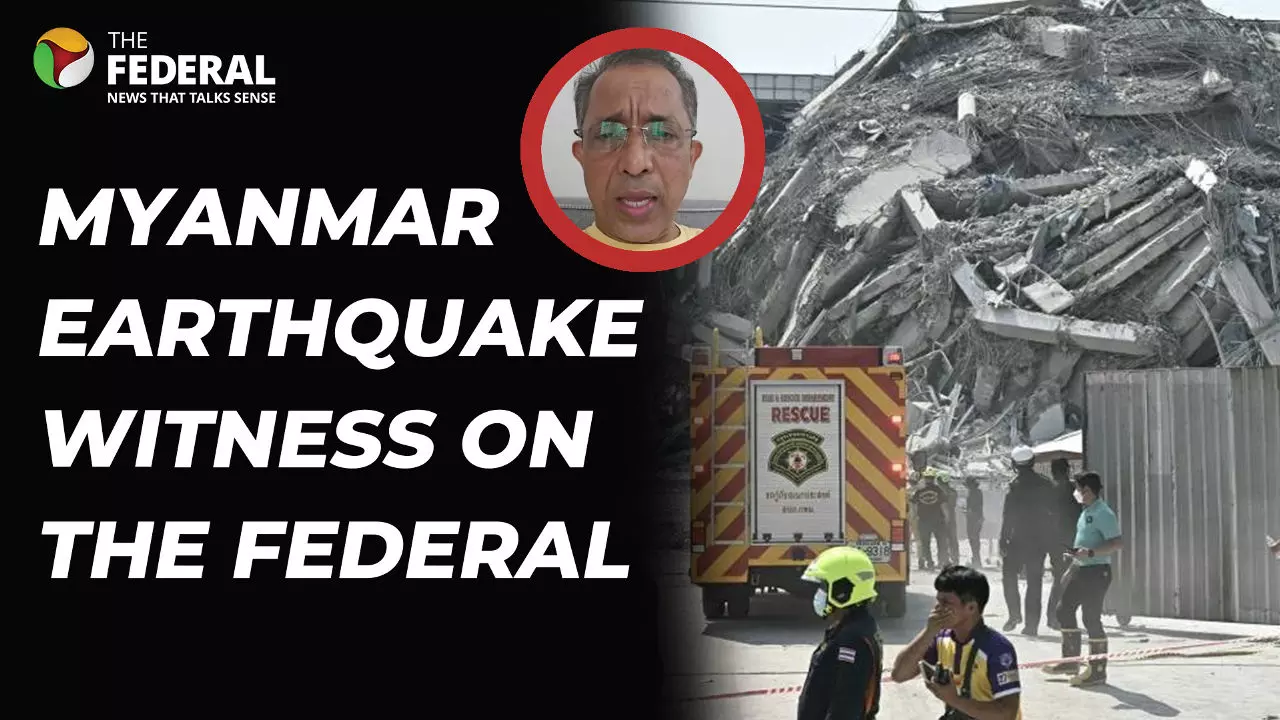
Myanmar Earthquake witness on The Federal
Myanmar earthquake kills over 1,000 in worst disaster in a century
A 7.7 magnitude earthquake rocked Myanmar, killing over 1,000 and displacing thousands. What’s next for the survivors still trapped under the rubble?

A powerful 7.7 magnitude earthquake struck Myanmar on Friday, leaving over 1,000 people dead, many injured, and thousands displaced. The seismic event, Myanmar’s most devastating in nearly a century, also triggered chaos in cities far from the epicentre, including Angun, which lies about 550–600 km away.
Widespread destruction
Although not at the epicentre, Angun city felt the tremors intensely. In the aftermath, The Federal spoke to Nandakumar, a resident of Angun, who recounted the chilling experience.
"It happened roughly around 12.50 pm. At that time, we were working at the office and initially, we did not realise that it was such a big earthquake," said Nandakumar.
The tremors caused major disruption in power supply. Several parts of the country are getting only one to two hours of power supply in a day.
Rescue efforts underway
According to initial reports, more than 800 homes have been damaged, and many residents remain trapped under debris. Massive rescue operations have been launched to locate survivors, but fear and uncertainty still linger.
"The power supply has gone and till now there is no power supply to the whole country," added Nandakumar.
To address the growing crisis, the Myanmar government has announced plans to set up relief camps for displaced citizens in the coming days and possibly weeks.
Global response
India’s Ministry of External Affairs has confirmed it is in contact with Indian nationals residing in Myanmar. Several other countries are reportedly monitoring the situation and offering assistance.
"Everybody is outside and the government has announced that they are going to set up relief camps," Nandakumar said, highlighting the seriousness of the displacement.
While the tremors may have subsided, concerns about aftershocks, healthcare, and rehabilitation continue to mount.
(The content above has been generated using a fine-tuned AI model. To ensure accuracy, quality, and editorial integrity, we employ a Human-In-The-Loop (HITL) process. While AI assists in creating the initial draft, our experienced editorial team carefully reviews, edits, and refines the content before publication. At The Federal, we combine the efficiency of AI with the expertise of human editors to deliver reliable and insightful journalism.)

